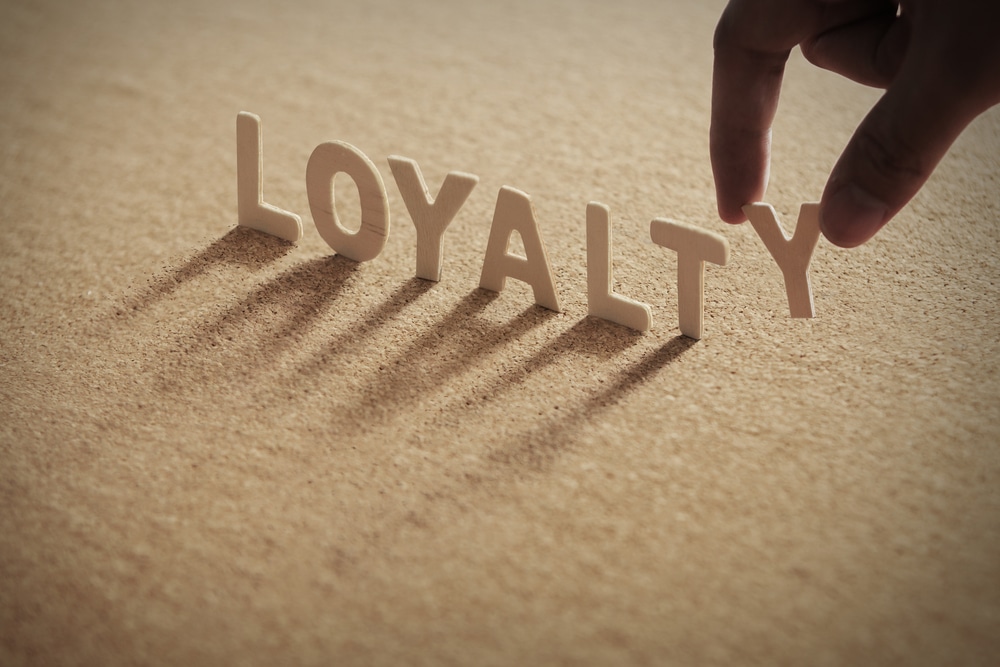
Killing Traditional Marketing with Pleasure with Steve Mann, CMO

Something that caught my attention when we first connected … literally on your LinkedIn profile it says “Killing Traditional Marketing with Pleasure.” What do you mean by that?
[SM]: When I say traditional marketing, I’m referring to the notion of a classical approach to marketing that involves building out a feature set, identifying the benefits, identifying the channels where my customers inhabit, and then trying to sell to them. For me, marketing isn’t about selling. Marketing is empathy and storytelling. My type of marketing is to always have customer experience at the center of what we do.
Many marketers were taught a classical approach to marketing. They talk about products from a rational perspective. They try to rationally address questions like “why should you buy my widget?” But 95% of our cognition is non-conscious.
The goal of the types of marketing that I put in market is to drive the emotional content, the emotional aspect that drives a person to buy.
If I walk into Banana Republic, for example, and try on a pair of jeans. I look at the price, which is a logical argument for why I should get the jeans. They are on sale for 20% off. Then I look at myself in the mirror and think “these make me look so good.” That reaction is completely emotional. It has nothing to do with whether or not I should actually purchase the product other than the fact that it’s resonating with me emotionally. And you have to have both. Whether it’s in direct-to-consumer marketing, B2B, or some combination. That’s what I mean by killing traditional marketing.

Consumer marketing is often where you see more of that emotional tie to marketing. How do B2B marketers build upon and implement that same strategy?
[SM]: Let’s say you’re selling to teachers and you’re selling them pencils. Pencils are not a sexy product, but they are essential to a teacher. Talk about that essentiality rather than the fact that it’s a #2 pencil and it has graphite in it. Instead, talk about how essential this tool is to your business. By doing so, you’re wrapping in an emotional argument as to why you should actually buy this pencil.
If you think about it, every emotion runs on a continuum. You can have abject terror on one side, but if you go to the other side of the continuum, it’s focus. Fear either freezes you in place or motivates you to action. So marketing that understands that continuum and nails it on where on the continuum you need to be is what I mean by emotional marketing.
One more example: lust. Sex sells. In a B2C perspective, depending on the lingerie or shoes that you’re selling, that undercurrent of lust is really important to help you market. Going back to B2B: desire is the other side of the continuum. I desire to be good at my job. I desire to show my boss that I’m worthy of a promotion. I desire to help my business because I’m loyal. So that’s where integrating emotional marketing and rational marketing is what I like to do to kill traditional marketing.
When and where can we work “sex sells” into B2B marketing?
[SM]: I could argue that the desire component of that continuum is a slight form of that. You don’t necessarily see a lot of sexy marketing in B2B, but there is a lot of emotional marketing. That’s truly how you are successful, by integrating the two — emotional and rational.

You talk a lot about loyalty marketing versus new customer acquisition. What does that mean?
[SM]: From a brand perspective, when organizations were traditionally branding themselves, it was all about making themselves attractive to their customer base and trying to develop loyalty through that attractiveness. By being authentic, credible, consistent in interactions, as opposed to inauthentic and not credible to the point where a customer can’t trust the brand. But now, with customer experience-driven marketing and engagement with customers, it’s about what the customer has dictated the experience should be. So brand marketing has flipped to become customer experience marketing. And rather than being focused by the organization in the hopes that it can build a connection with the customer, it’s now directly driven by the customers themselves.
Brands have to adapt more to their customers than ever before.
How do they do that? What are some of the technical strategies to make that shift?
[SM]: You can’t create compelling marketing and great experiences without knowing who you’re targeting. That’s such a fundamental step to being a good marketer.
As far as some of the things you can do, you can make buying frictionless. Don’t give me a hard experience. Don’t make it difficult for me to purchase your solutions. From a B2B perspective, it’s that classical buyer journey — awareness, evaluation, decision — but again, at each step, don’t make me work to become aware of your solutions. Don’t make me work to figure out whether you’re the right solution for me. Make it easy. Remove as much friction from the buying process as possible.
From more of an experiential perspective, make it fun. People can be serious folk, but the things that delight them make it easier to do. It doesn’t matter if you’re podcasting, if you’re buying widgets, if you’re buying enterprise software, that undercurrent of fun is important.

So by not making your customers work, what are some specific examples of that for B2B buyers?
[SM]: At one point in marketing, I had built out a customer experience and our goal was to create a more compelling customer experience for those folks that were buying our mid-market solutions where more of the buying experience was online. The first time we did this, we hadn’t listened enough to our customers and it was a failure. It didn’t perform as expected. We got negative reviews. So the team went back to the drawing board. We recognized that we had failed and decided to go out and learn more about our customers so we can build better experiences. We re-architected that experience. We introduced more short video content. We introduced more infographics. And it was a more compelling experience as a result because not only could people consume things easier, but also in a way that they are most in tune to – whether you’re a textual thinker or an iconic thinker, you had something for everybody. And that’s one of the keys to success.
So in your mind, content and being more educational is going to help them not work harder? You’re delivering a lot of the insights to them rather than making them take action to acquire that information, right?
[SM]: It’s aligning the content with the way people prefer to consume information. And that’s one of the primary elements of a compelling experience. Don’t learn about me and then just go about your traditional content marketing. Again, this is what I mean about traditional. You have to adapt quickly and you have to understand the nuances about how people consume information.

Due to the events that have unfolded in 2020, many marketers have had to reallocate upwards of 80% of their budget that was previously earmarked for travel, events, etc. Obviously, this has caused a major disruption and we are not even sure if that will turn back around next year. What shifts are you making right now and what advice would you give other marketers?
[SM]: In the post-pandemic market, the market has fundamentally changed. It’s given a pause, which has given competitors time to up their game and it’s given time for organizations to head back to that development roadmap and really rebuild the catalog of solutions and features that customers are looking for. So there’s this pause, but what do you do in a pause? You change your messaging. At the beginning of the pandemic, it’s been a sense of “don’t talk to me about selling” or “don’t sell to me,” but instead, “make me feel more comfortable,” “be more nuanced in your conversation,” “distract me because I’m nervous. I really don’t want to focus on this, I want to focus on keeping my job right now and spending a ton of money on enterprise software is not really what I’m going to do right now.”
But now, we’re on this cusp where hopefully things are opening up and they are opening up safely. People are more re-focused on the standard elements of their role. So now you can begin to integrate this nuance and humor into more acquisition marketing orientation or customer loyalty acquisition. Each of us as marketers already have that cadence, we know what will resonate with our particular customer base. It’s more a matter of growth strategy in terms of the messaging. What’s the message I want to send? Is it about safety, security, and distraction? Or is it acquisition, customer loyalty, and reward?
What channels would you be doubling down on right now to deliver that message?
[SM]: Yes. The channels don’t change necessarily. You’re going to be optimizing the channels that work. You’re going to use the channels for your brand where friction is least and where communication channels between you and your customer base are strong.
There’s this notion that you should be everywhere and really expansive in all these channels. You want to, obviously, refine that so that you’re optimized for the particular channels that are performing best. You may be across a dozen channels, for example, but you’re seeing that Instagram and LinkedIn are performing best out of your social channels. So you may decide to pull budget from less performing channels and double down on those higher performing channels. Those are the types of decisions, the optimization of channels, that takes you from a pure omnichannel experience to an omnichannel experience on steroids because you’re really focused on the ones that are working.
From a channel perspective. I’d focus on LinkedIn for B2B. LinkedIn tends to have the highest conversion rate other than website for B2B. Obviously, you’re going to be pumping content through that channel, but that’s the channel that I would be focused on.

What resources would you recommend to become a pro at copywriting and learning the psychological aspects of B2B marketing?
[SM]: From a content marketing perspective, I like Marketing Profs. Ann Handley is brilliant when it comes to the ins and outs of developing great content. So that’s a great resource to learn. Another is just on-the-job training. You’re going to be creating content and if you’re a smart marketer, which I’m sure you are, you’re going to be looking at the analytics to see what’s performing and what’s not. You’re going to be using some of the more classic tools like A/B testing. You’re going to not only test the content, but the experience related to the content.
The other thing is, you should train yourself. Just write! That’s what I love to do. I just think about bizarre things in my mind and start writing about them. I realized, the more I do that, the better I am at connecting to my audience because I’m understanding what’s being read and what’s not. Be a practitioner.
Anything else you’re like to add?
I think it’s critically important to get beyond the marketing as you know it. You have to get your hands dirty. You have to sit down with your demand generation team members and really help craft the campaign. You have to be focused on thought leadership content.
Marketers sit at the intersection of strategy and creativity. It’s their job to help craft corporate strategy and what those business objectives are going to be. On top of that, it’s their job to develop a creative execution of that strategy so they can help fulfill it. I think marketers should think of their job in that way. That they are not just fielding a tactical email campaign. You have to align the corporate strategy and business objectives of the organization.

Steve Mann is CMO and Founder of JAMA where they build “stay relevant” approaches for today and link them to first mover activities as we come out of the COVID pandemic. Mann also serves as a Venture Coach and Mentor with JVP, where he is a volunteer advisor, providing go-to-market mentoring to member startups in the JVP Cybersecurity Accelerator. Mann focuses on driving market and financial returns through collaboration with CEOs and their marketing teams. By aiding in the development of category-defining positioning and messaging, compelling branding and demand programs, and team talent JVP aims to accelerate growth and distance the startup from existing and new market entrants. Follow and connect with Steve on LinkedIn.
Connor Dube is Sales & Marketing Director at Active Blogs, an industry leader in B2B social selling and content strategy, Co-Founder of the Mile High Mentors Podcast, and Founder of B2B Mentors. Building his first business at seven, he’s gone on to create multiple companies and supporting his clients approaches to adding multiple 8-figures to their sales pipeline with his innovative approach to Social Selling. As a current leader in sales and marketing strategy for complex industries, Connor’s been featured in top podcasts, resources, and stages, including MSU Denver’s current sales and marketing curriculum.
Connect with Connor on LinkedIn: https://www.linkedin.com/in/socialsellingexpert/ or email him at connor@activeblogs.com





